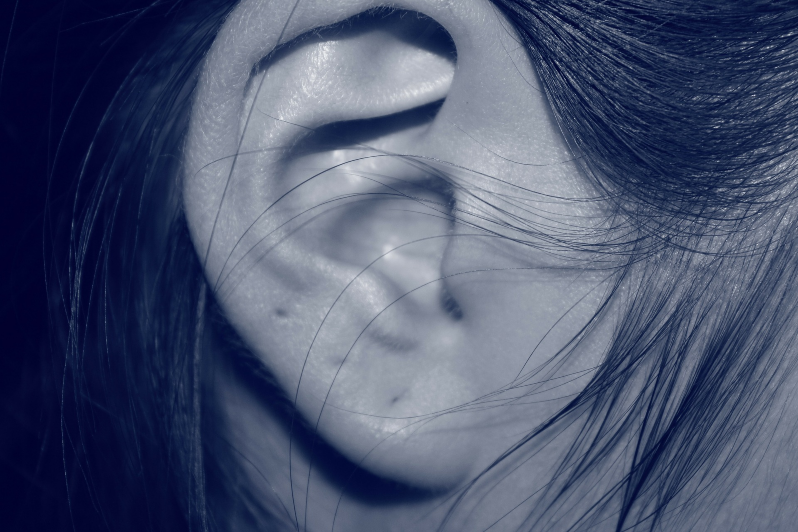
This is a very personal decision, but some experts do warn of potential risks in piercing your child’s ears at too young of an age. “Any time you puncture the skin, you open up the opportunity for infection, and because infants still have developing immune systems, I encourage parents to wait until their child is at least 6 months old to get her ears pierced,” says Wendy Sue Swanson, M.D. If you’d prefer that your child make their own decision about ear piercing, it’s probably best to wait until they are around 10 or so to talk about it with them. Remember: the older the child, the more likely they’ll be able to take responsibility for keeping their new piercing clean and free of infection.
“When your daughter gets her ears pierced, it will be somewhat painful,” Dr. Swanson says. Talk to your child about the piercing in the same way you would talk about an injection at the doctor’s office — reduce their anxiety by saying it’s a quick procedure and encourage them to breathe deeply.” Your doctor is able to prescribe a topical numbing cream with lidocaine derivatives that can help with the pain of a piercing. You should layer a thick coat of the cream onto the lobes 30 to 60 minutes before having the piercing done. Some experts also say that applying ice 15 to 30 minutes before the piercing can possibly help numb the pain receptors as well. If you do this, you might consider covering your child’s ears (or the ice) with plastic wrap or a similar substance, as the ice can cause discomfort if applied directly to the earlobe for too long. Neither of these solutions will likely completely remove all of the pain, though. It also helps to have a pediatric nurse doing the work, as they are typically experienced in keeping children calm and handling any meltdown.
Surgical stainless steel rings and posts can be your best bet — mostly because this metal doesn’t contain nickel (or any other alloys) that might cause an allergic reaction. Nickel and cobalt allergies are extremely common, so most experts recommend against using anything that contains either of these metals. Some children may even be sensitive to white gold, as it can often contain nickel, says Bruce A. Brod, M.D., clinical associate professor of dermatology at the University of Pennsylvania Health System. Besides surgical stainless steel, the safest options typically include platinum, titanium, and 14K gold. The key when choosing earrings is to ask which metals were used — and talk to your local pediatrician about what might be safest.
After the ears are pierced, avoid infection by always keeping your child’s earrings clean. Wash your hands with a mild soap and then clean the front and back of the earrings twice a day by using a cotton ball or pad that’s been dipped with a little rubbing alcohol, hydrogen peroxide, or cleaning solution provided by your piercer. It’s important to remove any dried blood or “crusties” that might have collected around the piercing since the last washing. Once clean, allow the pierced hole to maintain its shape by gently rotating the earrings and sliding them back and forth a few times. Make sure the earring is not too tight! It is important to note that no matter how excited you might be to give your child a fancy new pair of earrings, you should be patient and not remove the first pair of earrings until at least six weeks have passed — if you do, the hole will immediately start to close. After six weeks, it is OK to remove the pair of “starter” earrings and replace them with another — but make sure your child wears earrings continuously for six months so that the holes will become permanent.
Redness, swelling, or excessive drainage as well as any pain, itching, or tenderness are signs you should contact your local pediatrician to determine if it’s an infection or a possible allergy, says Jenny Murase, M.D., assistant clinical professor of dermatology at the University of California, San Francisco. If it turns out your child is allergic to the metal in their current piercing, simply choosing something new will likely solve the problem. If it’s an infection, however, your pediatrician will prescribe antibiotics to treat it, especially if the child has a pediatric fever.
If there is a reaction, remove the earrings right away and wait at least six months or longer before you consider getting the ears pierced again. Keep in mind that keloid tissue (thick scar tissue) is more likely to develop when there’s an infection or allergic reaction. “Repeatedly traumatizing the area greatly increases the chances that a person will develop keloids,” Dr. Murase says.
“When getting your child’s ears pierced, avoid piercing the cartilage — doing so carries a much higher risk of infection and keloid formation,” Dr. Brod says. When your little one is changing their clothes or brushing/combing their hair, make sure they don’t irritate or bump their newly pierced ears. Try to keep hairspray, shampoo, perfumes, and similar products away from the earrings as much as possible.
Some experts say no; others warn that children should be extra careful, especially during the first two weeks after a piercing when the wound site is most prone to infection. For example, Dr. Garner suggests avoiding swimming in a lake or ocean, which might contain unknown bacteria, for those two weeks. As for sports, some sports like horseback riding, softball, and lacrosse require a helmet which might rub against the ear, and these should be avoided. It’s ideal to take earrings out before engaging in and activity, but if your child is playing during the first six months after piercing, consider putting Bandaids over the earrings to protect them. Before you pierce your child’s ears, it’s usually a good idea to check with their coach to see if earrings are even allowed — depending on the sport and league, you might have to wait until the season is over.
As usual, you should contact your Cape Coral pediatrician with any questions you might have about your child’s health and wellness.
MacKoul Pediatrics is an amazing local pediatrics office in Cape Coral, FL where caring, compassionate doctors and nurses work with you to keep your children as healthy as possible. MacKoul cares for children from birth to college age, from Cape Coral, Fort Myers, Naples, and beyond.
January 9, 2017

